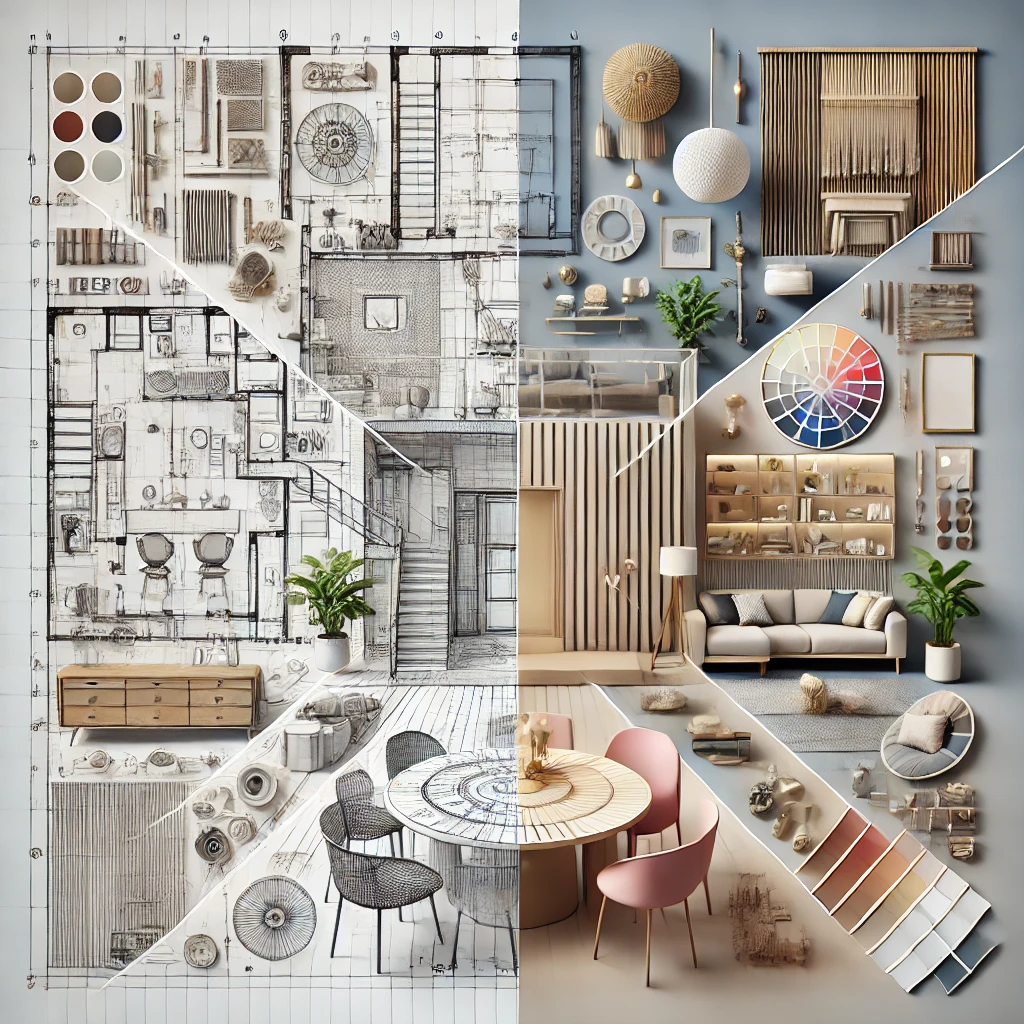
Differences Between Interior Architecture and Decorating: Which Is Right for You?
Understanding the differences between interior architecture and decorating is a critical step in optimizing your living space. While these two professions are often confused, they have significant differences in educational requirements, responsibilities, and project approaches. In this article, we’ll delve deep into the fundamental distinctions between interior architecture and decorating to help you determine which professional best suits your needs.
1. Education and Certification
Interior Architects undergo a comprehensive educational process. They typically complete a four-year university degree, focusing on:
- Architecture and Design Theory: Gaining in-depth knowledge about how spaces are designed and how people interact with them.
- Building Systems and Ergonomics: Specializing in the structural integrity of buildings and how to create comfortable, efficient spaces.
- Material Knowledge and Technology: Understanding the properties of different materials and how to utilize them effectively.
- Building Codes and Safety Regulations: Ensuring designs comply with legal requirements and safety standards.
Decorators, on the other hand, usually complete shorter educational programs or certifications. Their focus areas include:
- Color Theory and Style: Studying the psychology of colors and aesthetic principles.
- Furniture and Accessory Selection: Choosing appropriate furnishings and decorative elements for a space.
- Trends and Fashion: Keeping up-to-date with current design trends to give spaces a modern look.
2. Responsibilities and Duties
Interior Architects play an active role throughout all stages of a project:
- Structural Changes: Capable of making significant alterations like removing or adding walls.
- Technical Systems: Involved in planning and implementing electrical, plumbing, and HVAC systems.
- Project Management: Oversee the construction process and coordinate with other professionals.
- Budget and Time Management: Ensure the project is completed within the specified budget and timeline.
Decorators focus primarily on the aesthetic aspects of a space:
- Decorative Arrangements: Handling furniture placement, accessory selection, and arrangement.
- Color and Texture Selection: Choosing wall colors, textiles, and other surface materials.
- Personalization: Reflecting the client’s personal tastes and lifestyle in the space.
3. Project Approach
Interior Architects approach projects from a technical and analytical perspective:
- Detailed Planning: Measuring spaces, creating drawings, and developing 3D models.
- Code and Regulation Compliance: Ensuring designs meet all legal and safety requirements.
- Material and Technology Selection: Focusing on energy efficiency and sustainability.
Decorators view projects from a more aesthetic and emotional angle:
- Style Determination: Establishing a theme or style based on the client’s preferences.
- Quick Implementation: Typically work on shorter timelines and deliver rapid results.
- Attention to Detail: Adding character to spaces through decorative elements.
4. Client Collaboration
Interior Architects:
- Comprehensive Communication: Deeply understand the client’s needs and expectations.
- Long-Term Partnership: Maintain constant communication due to the project’s extended duration.
- Professional Guidance: Provide expert advice on technical matters.
Decorators:
- Flexible Communication: Work on shorter, more flexible projects.
- Personal Touches: Infuse the client’s personal style and story into the space.
- Budget-Friendly Solutions: Often work within limited budgets, offering creative alternatives.
5. Which Professional Should You Choose?
Knowing the differences between interior architecture and decorating helps you decide which professional aligns with your project’s needs:
- For Structural Changes: If you aim to alter walls, add new rooms, or completely transform a space’s functionality, an interior architect is the right choice.
- For Aesthetic Enhancements: If you’re looking to update your space with new furniture, color schemes, or decorative accessories, a decorator is ideal.
6. Cost and Budget Management
- Interior Architects: Due to the comprehensive nature of their projects and structural changes involved, costs may be higher. However, they can significantly increase your space’s value in the long term.
- Decorators: Provide quick and effective solutions within lower budgets, perfect for swiftly refreshing a space’s appearance.
7. Sustainability and Eco-Friendly Design
Both professionals can incorporate sustainability principles:
- Interior Architects: Implement energy-efficient systems, use natural materials, and apply sustainable building techniques.
- Decorators: Select recyclable materials, eco-friendly paints, and energy-saving lighting options.
Conclusion
Interior architecture and decorating offer different yet complementary approaches to transforming your living spaces. Understanding the differences between interior architecture and decorating will help you choose the professional that best fits your project’s requirements. Remember, the right choice will positively impact both the functionality and aesthetics of your space.
